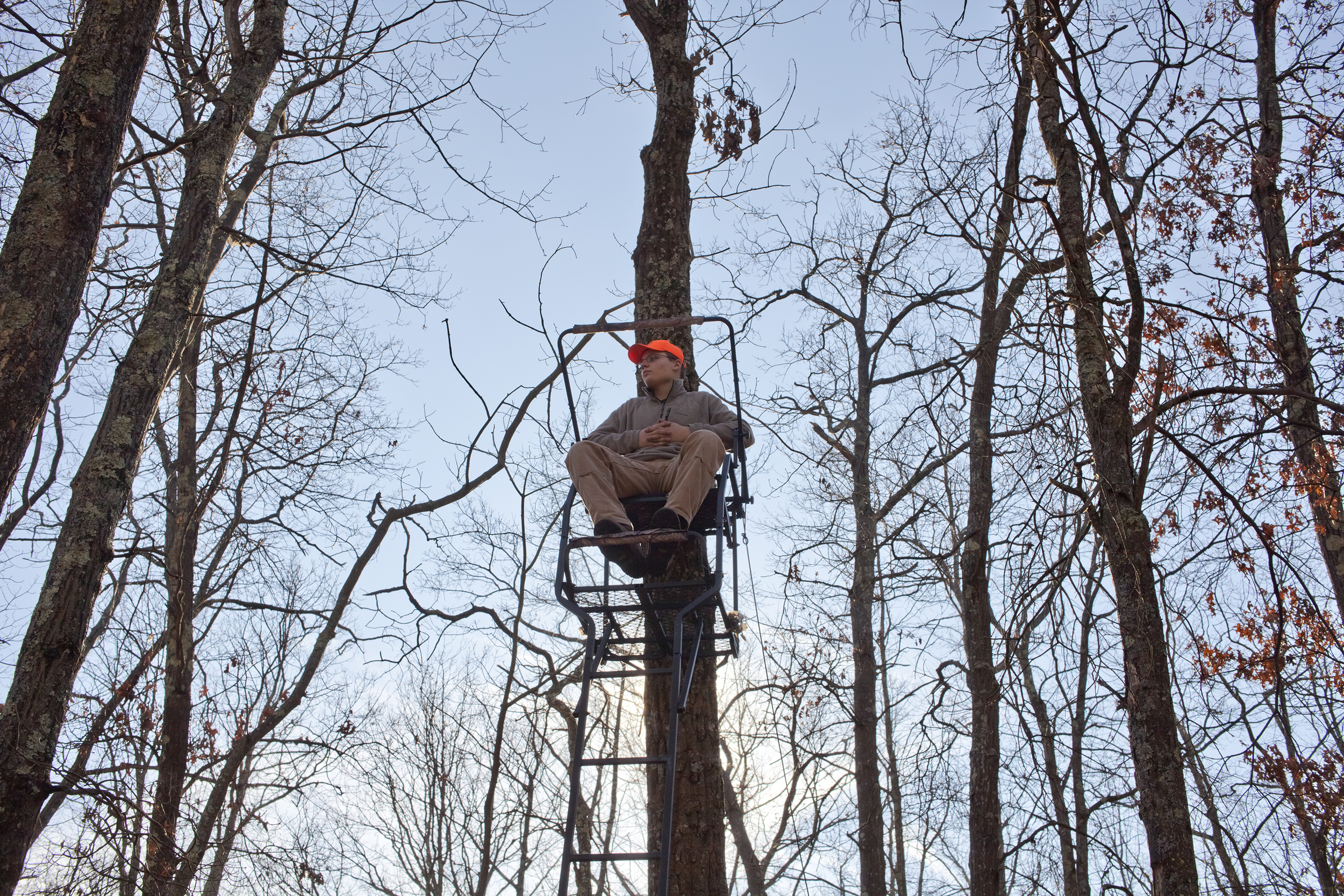


































An Inuit hunter uses a set of white coveralls to blend into the surrounding ice while in search of a nearby seal.

This fully camouflaged hunter wears a neon vest to be visible to other hunters in the area. To the dear he is hunting, this orange appears as a dull beige.

Workers at a Pennsylvanian bear weigh station determine the gender and weight of each bear shot in order to keep an accurate record of the amount, age, and gender of each bear shot during the state’s two-week-long bear hunting season.

Three skinned black bear heads lie in a taxidermist’s cold room waiting to be cleaned and bleached

Nucca, an Inuit hunter, prepares his boat for an upcoming Narwhal hunt. This new-age style of hunting by motorboat has already begun to replace the traditional hunting style because the ice they depend on to hunt disappears earlier each year. The cost of this new hunting practice is far more expensive which forces many hunters to become fishermen, a craft that doesn’t require as extensive a journey.

Fiberglass taxidermy molds wait to have skins stretched over them to create life-like replicas of a hunters catch.

This duck hunter attaches harvested cedar limbs to his duck blind to ensure optimal camouflage.

Dan Bock teaches his young daughter the intricacies of deer and coyote hunting in Danbury, NY.

Chris Koler drags his fresh kill out of the woods to be skinned and processed to fill his freezer for the winter.

In south Texas feral hogs have mixed with local wild boar, becoming a menace on the land. These hunters are in the process of carrying out their yearly hunt to try to keep the hog population at a sustainable level.

Pure bread Greenlandic Huskies prepare to pull their owners across the frozen sea ice in search of suitable seal hunting grounds. These dogs are more and more land-bound as they are being replaced by snowmobiles. As the ice season shortens this unique breed continues to disappear due to lack of exercise and the high cost of keeping them alive

Long-line fishing in the arctic is essential as a means to provide food to each hunter’s pack of huskies. This fishing hole is only 200 yards offshore, but the depth extends to over ¾ of a mile. Nowadays, the fishermen are forced to gut each fish before feeding them to their dogs because the magnetic pull of the North Pole has forced much of the oceans’ pollution northwards making the entrails of these Halibut potentially deadly in large quantities.

Two hunters strategize an upcoming sunrise drive, which is when two groups of hunters fan out in the woods and sweet the forest in hopes of spooking a buck toward a fellow hunter.

This hunter assembles a curtain, which he mounts to the front of his rifle. He will then use it to cloak himself as he crawls along the ice, making him invisible to the unsuspecting seals ahead. These seals are essential for Inuit survival on the remote island of Uummannaq for food and warm clothing.

A group of hunters in Germantown, NY prepare to drag one of the last existing cedar floating duck-blinds out onto the Hudson river in time for opening day of Duck and Goose Season.

Recently shot Ptarmigans are hung outside an Inuit home in subzero temperatures until they are plucked and eaten.